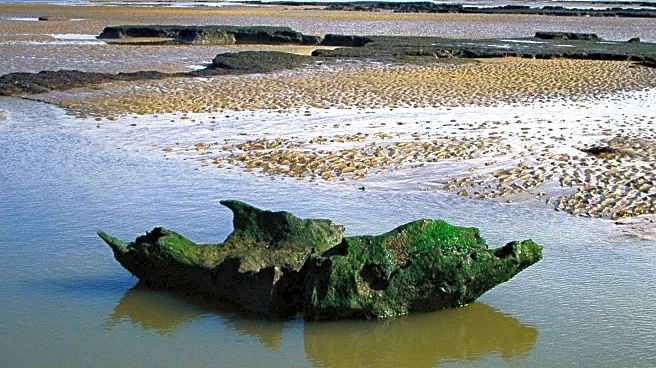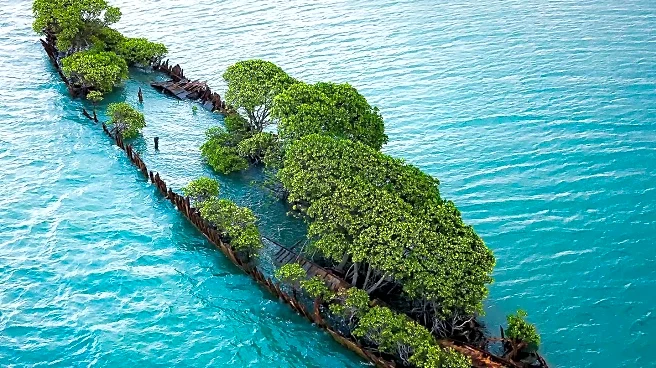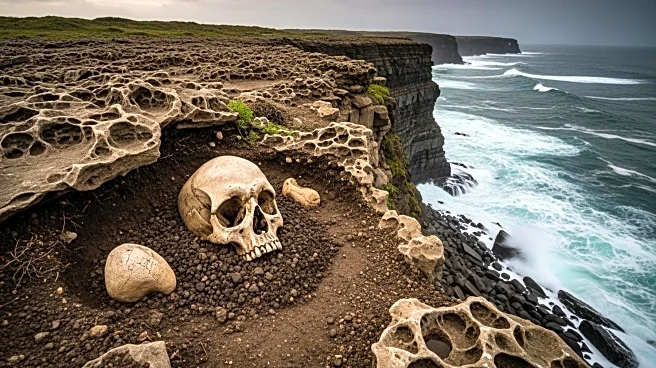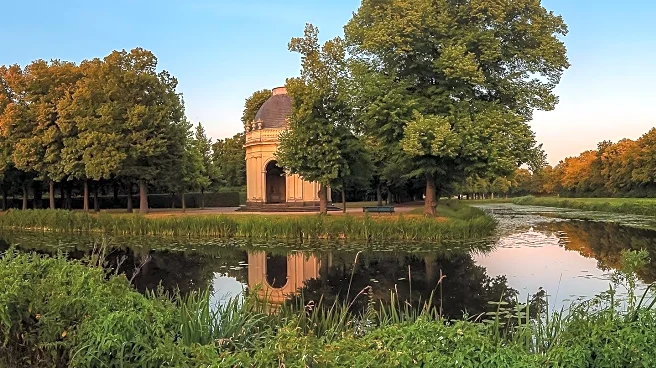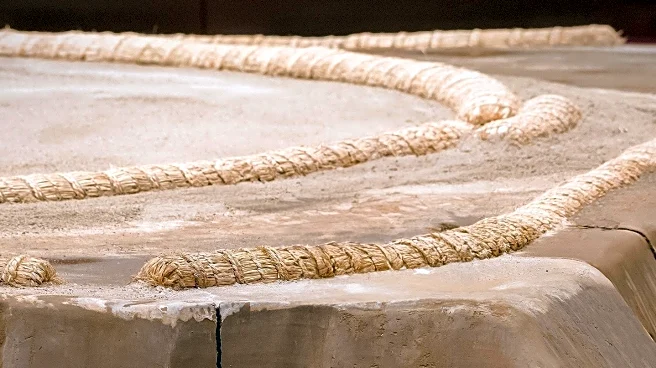What's Happening?
Deadman's Island in Kent, located opposite Queenborough on the Isle of Sheppey, is revealing human graves from over 200 years ago due to natural erosion. The island was historically used to quarantine ships entering London to prevent the spread of contagious diseases. Many of the remains belong to sailors and prisoners who died from diseases while on board ships moored nearby. Rising sea levels and coastal erosion are exposing wooden coffins and skeletal remains, raising concerns about the preservation of these historical sites.
Why It's Important?
The exposure of graves on Deadman's Island highlights the impact of environmental changes on historical sites. This situation raises questions about the preservation of cultural heritage in the face of climate change and natural erosion. The potential presence of contagious diseases in the remains also poses a public health concern. This development underscores the need for archaeological and environmental interventions to protect and study these sites before they are lost to erosion.
Beyond the Headlines
The situation on Deadman's Island reflects broader challenges in balancing heritage conservation with environmental changes. It prompts discussions on ethical considerations in handling human remains and the responsibilities of preserving history for future generations. The island's history as a quarantine site also offers insights into past public health practices and their relevance to contemporary issues.
